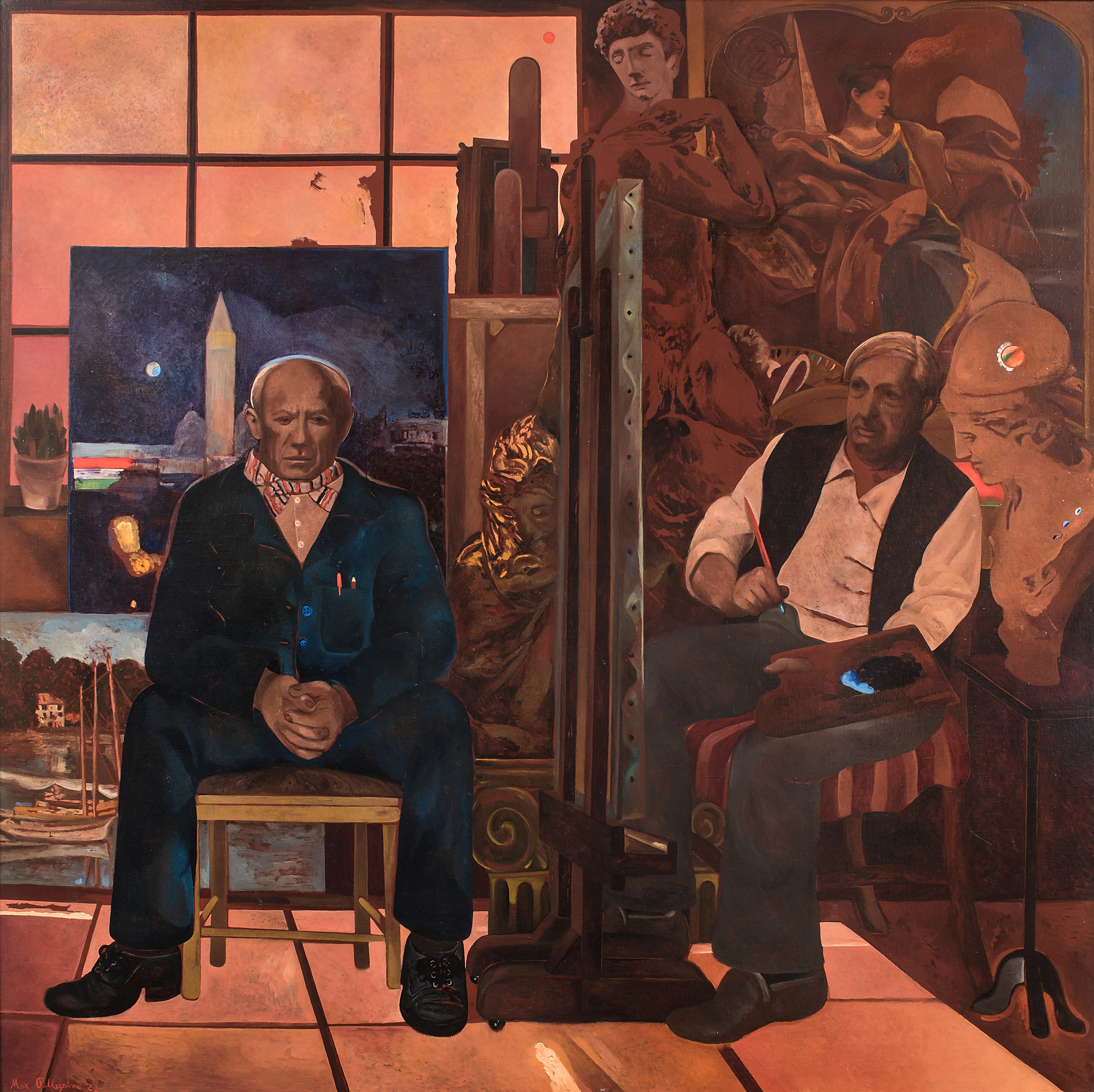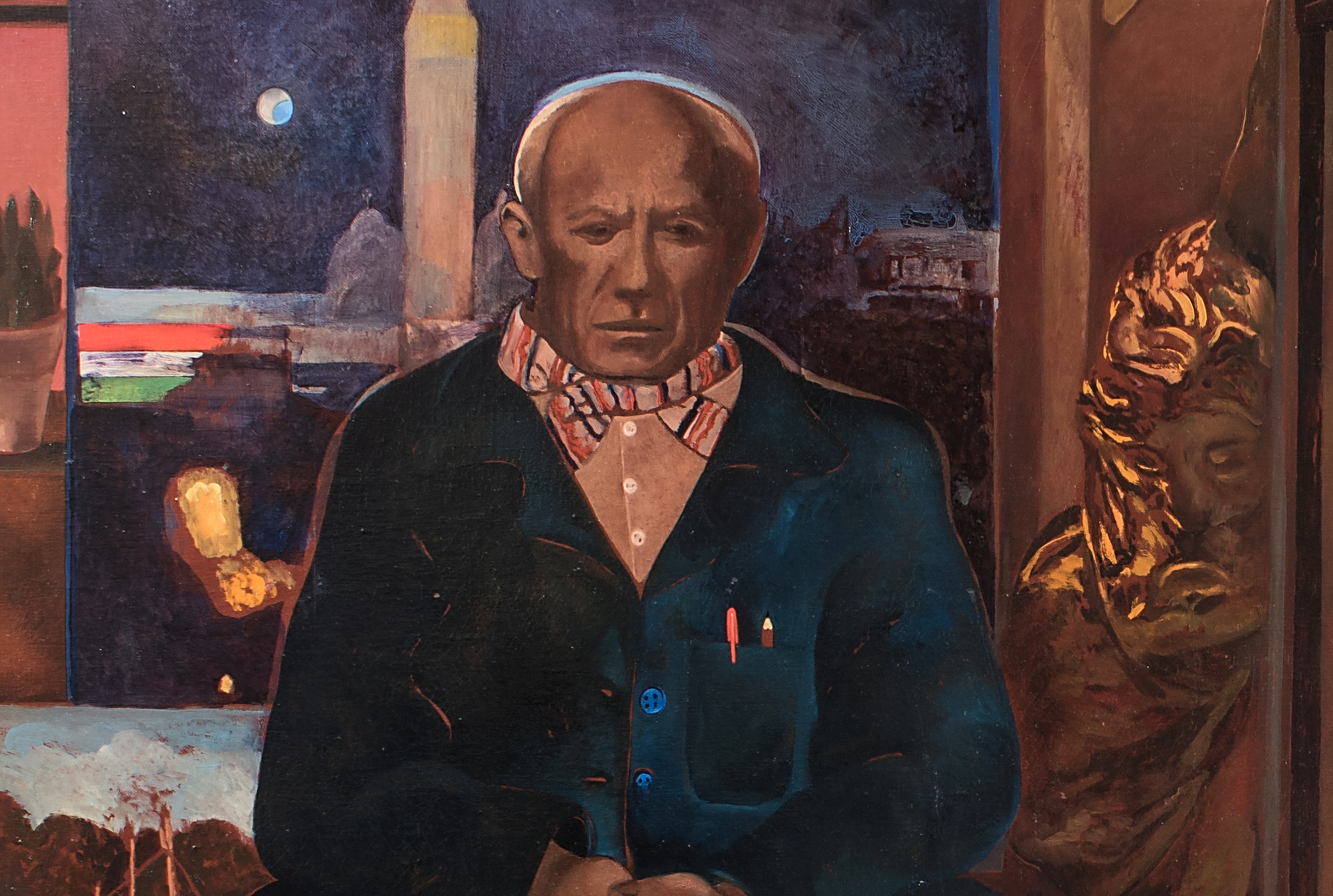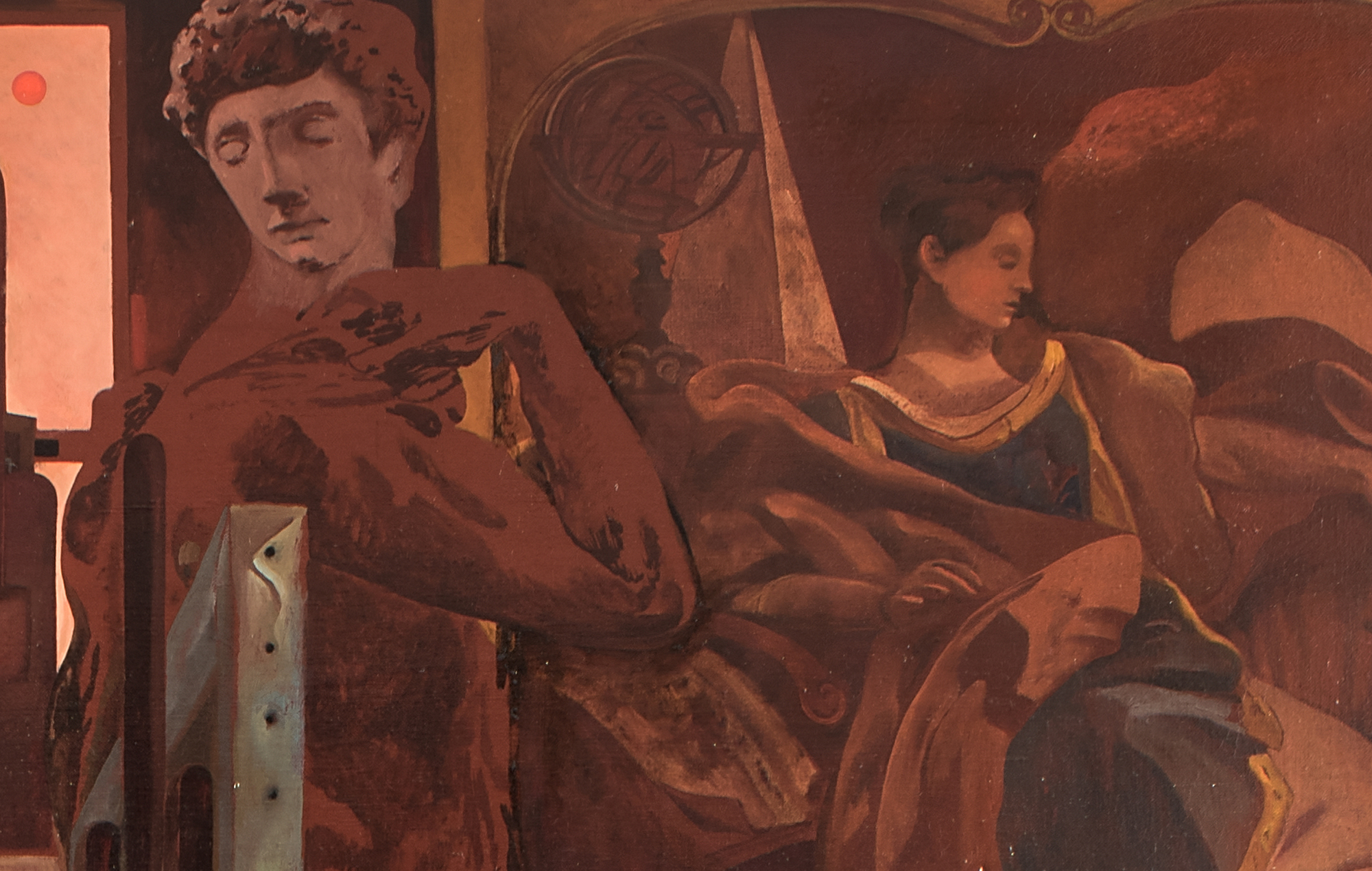MAX PELLEGRINI (b. 1945)



64,000
"Oui, l'ironie est un des éléments de ma peinture. Je me moque de moi-même et de mes peurs et phobies névrotiques et je transforme la situation en détails ironiques, voire parfois hilarants. J'ai placé un chat, par exemple, avec des yeux phosphorescents dans une scène bucolique, ou dans le sujet du Carnaval je mélange la mort, le ridicule et la plaisanterie." (Antonio Monda, "Interview with Max Pellegrini", dans Max Pellegrini, ed. Danilo Eccher, 2014


